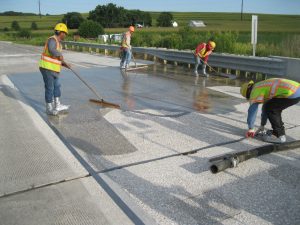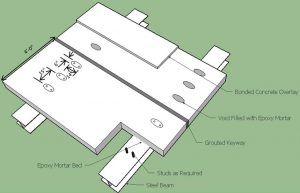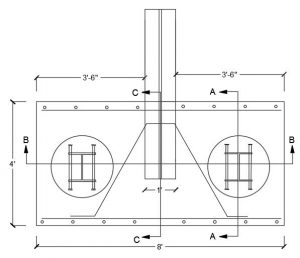July 29, 2016 1:00 pm
In this graduate student seminar Meghan Cronin presents research on the use of ABC approaches for bridge rehabilitation, and Sam Redd presents laboratory testing of integral abutment details for ABC. Both research projects were conducted at Iowa State University.
Seminar Documents
- Presentation #1: Synthesis on the Use of ABC Approaches for Bridge Rehabilitation - pdf of presentation
- Presentation #2: Laboratory Testing of Integral Abutment Details for Accelerated Bridge Construction - pdf of presentation
- Q&A Session
Featured Presentation #1: Synthesis on the Use of ABC Approaches for Bridge Rehabilitation
by Meghan Cronin, ISU Graduate and former ISU Research Assistant (M.S., December 2015); Structural EIT, Meyer Borgman Johnson, Inc., Minneapolis, MN
Description: ABC has received significant research attention in recent years. For the most part, these research endeavors have focused on means and methods for decreasing impact to the traveling public during bridge replacements. At the same time, great opportunities exist to reduce traffic impacts by decreasing construction time associated with bridge rehabilitation. Most bridges undergo several small and one or two major rehabilitations during their useful lives and decreasing the traffic impacts during these events could have significant benefits. Fortunately, many new construction concepts may be adapted for use in rehabilitation scenarios. In other cases, new means and methods may be needed. This presentation provides a comprehensive summary of available rehabilitation alternatives and solutions that could be used by practitioners to complete rapid rehabilitation projects.
Featured Presentation #2: Laboratory Testing of Integral Abutment Details for Accelerated Bridge Construction
by Sam Redd, ISU Graduate and former ISU Research Assistant (M.S., December 2015); Structural EIT, Felsburg Holt and Ullevig, Denver, CO
Description: The benefits of integral abutment bridges have rarely been tied to the ABC movement. Currently little documentation or information is available on the performance of integral abutments used for ABC. This research studied the strength, durability and constructability of two ABC integral abutment details through laboratory testing. Both details featured the use of grouted splice couplers to connect precast concrete abutments to their abutment diaphragms. One detail used traditional rebar splice couplers while the other detail used a corrugated metal pipe void and a section of foundation pile to splice the elements. This presentation will cover the construction of the laboratory specimens, the results from the testing, potential uses for both details as well as further research needed to improve the details.
Presentation Graphics:
Presentation #1
Typical polymer overlay application; polymer overlays are commonly applied to bridge decks as a means of protection against infiltration and deterioration
Typical precast concrete deck panel and associated shear connection details; precast deck panels are a time- and cost-efficient way to replace portions of deteriorating bridge decks or even a bridge deck in its entirety
Associated shear connection details for steel girders
Associated shear connection details for concrete girders
Presentation #2
Section view of abutment showing CMP void and section of foundation pile that was used to create connection between pile cap and diaphragm; a lowering system and grout ducts were placed in abutment diaphragm to lower pile and also to fill CMP void with non-shrink grout
Plan view of pile couplers which are located on either side of girder
Section view of grouted rebar coupler detail which uses splice couplers to connect vertical steel in front and back face of integral abutment








